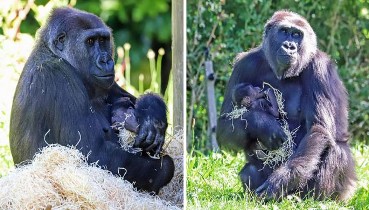
Lybrook Fossil Area
Geologic History Revealed
Managed and protected by the Bureau of Land Management, the Lybrook Badlands expose the Nacimiento sedimentary layer, which is approximately 65 to 55 million years old. It is the largest of the Nacimiento badlands and one of the largest badland regions in the San Juan Basin. The black layers of coal seen today were formed by the plants and animals that died as the inland sea receded, leaving a flat plain of sandstone over soft shale and mudstone.
The geology of the region is more diverse than the Bisti. Water flowing from the San Juan Mountains stripped away the southern portion, exposing the lower Kirtland and Fruitland Formation of the Cretaceous period, when dinosaurs still roamed. The fossil area is a testament to the abundance and variety of life buried long ago, including several discoveries of dinosaurs. However, please note that it is illegal to remove larger fossils from the area.
The Rocky Mountains started forming to the north and east about 30 to 50 million years ago, with other mountains lifting to the west as the Colorado Plateau rose, rain and snowmelt washed down from the mountains. The water eroded the sandstone, cutting through to the softer stone below. In some places, chunks of sandstone remained, protecting the softer layers of rock underneath from the water, forming column-like “hoodoos” over time. Note: Though it might be tempting to climb the hoodoos, they are more fragile than they look. Please don’t climb on the hoodoos.
Managed and protected by the Bureau of Land Management, the Lybrook Badlands expose the Nacimiento sedimentary layer, which is approximately 65 to 55 million years old. It is the largest of the Nacimiento badlands and one of the largest badland regions in the San Juan Basin. The black layers of coal seen today were formed by the plants and animals that died as the inland sea receded, leaving a flat plain of sandstone over soft shale and mudstone.
The geology of the region is more diverse than the Bisti. Water flowing from the San Juan Mountains stripped away the southern portion, exposing the lower Kirtland and Fruitland Formation of the Cretaceous period, when dinosaurs still roamed. The fossil area is a testament to the abundance and variety of life buried long ago, including several discoveries of dinosaurs. However, please note that it is illegal to remove larger fossils from the area.
The Rocky Mountains started forming to the north and east about 30 to 50 million years ago, with other mountains lifting to the west as the Colorado Plateau rose, rain and snowmelt washed down from the mountains. The water eroded the sandstone, cutting through to the softer stone below. In some places, chunks of sandstone remained, protecting the softer layers of rock underneath from the water, forming column-like “hoodoos” over time. Note: Though it might be tempting to climb the hoodoos, they are more fragile than they look. Please don’t climb on the hoodoos.
Advertisements
25 February 2023
Advertisements



